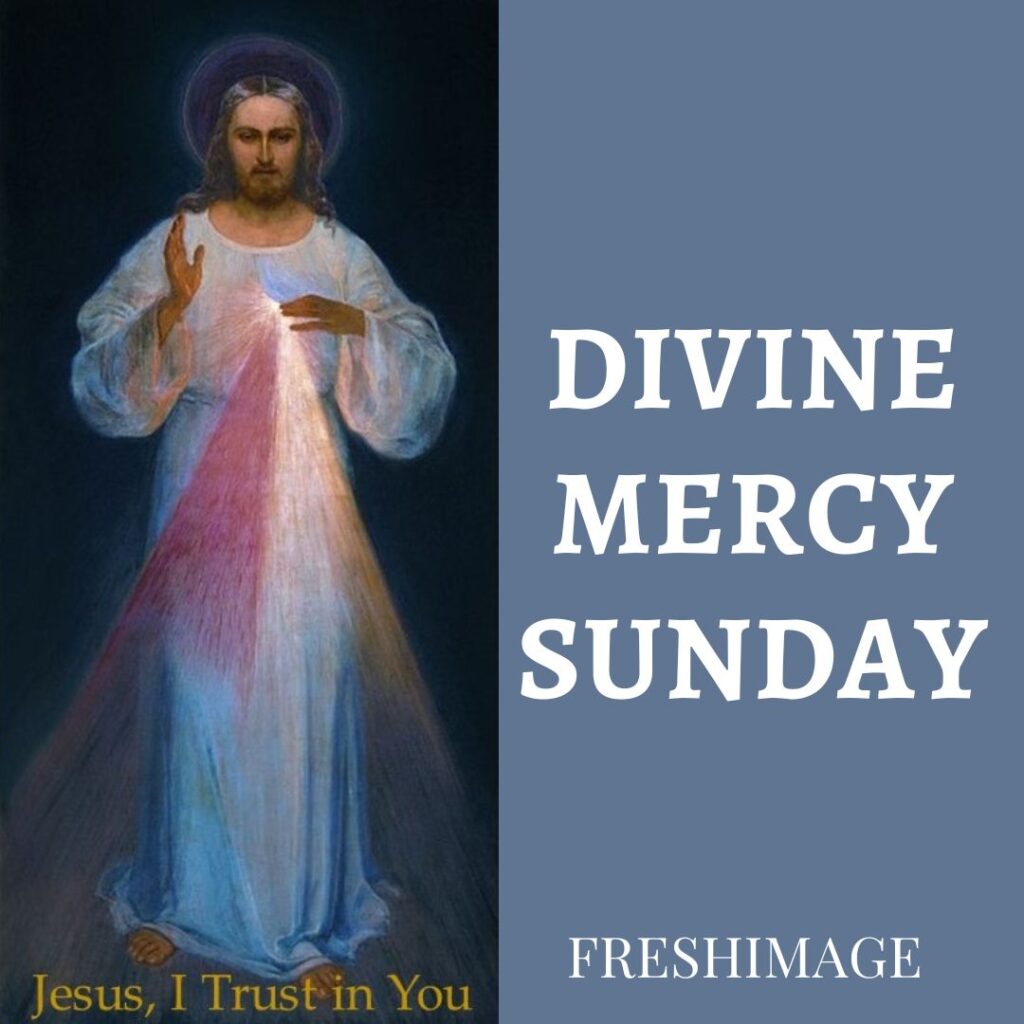
During the Great Jubilee of the Year 2000, Pope St. John Paul II proclaimed that the Second Sunday of Easter would from then on be celebrated as Divine Mercy Sunday. He made this proclamation on the occasion of canonizing the woman known as the saint of Divine Mercy, St. Faustina Kowalska. It was to Sr. Faustina that Jesus revealed that He wished the world to know, a world at that time was in the wake of suffering the devastation of WWI and would soon face the atrocities of WWII, that He is “love and mercy personified,” (Diary, 374). Therefore, as the Octave of Easter concludes, the Church wishes to impress upon us that the God who would not suffer His Beloved to remain in the grave will neither suffer those who are His Body to languish in the darkness of the valley of tears and the shadow of death, but guide their feet, which are now the feet of His Son, into the way of joy and peace.
This is precisely what the white and red rays issuing forth from the sacred heart in the image of Divine Mercy represent. Not only has the Son of God handed himself over for us, as though ‘forgetting himself and seeing only us’ in the greatness of His Loving Mercy, as St. Faustina wrote, but in so doing He has blessed us with the means of becoming nothing less than Himself. The latter are what the white and rays symbolize. Just as light bathes and illuminates whatever it falls upon, so too the Son has handed himself over in such a way that we are able to share in His death and Resurrection in Baptism (signified by the white ray), and be completely transfigured into His Body by consuming His very Person in the Eucharist (signified by the red ray).
Accordingly, today’s celebration not only recalls the great Mercy which God has bestowed upon us in His Son, but reminds us that God’s Mercy is transfigural. Today is therefore a great call to action. Saturated with God’s Mercy, we are summoned to be His Sacrament of Mercy to the World, to be “merciful, just as [our] Heavenly Father is merciful,” (Luke 6:36). Through the imitation of the Face of Mercy which we gaze upon today, we become evangelists of Divine Mercy even as we make that same Mercy present to the world, and in so doing, trod the only path to everlasting joy, mindful of Our Lord’s promise: “Blessed are the merciful, for they shall obtain mercy” (Matthew 5:7). Active imitation of the Father’s mercy, therefore echoes and realizes the response prayed in the Divine Mercy Chaplet, Jesus, I trust in you!
Below you will find resources for praying the Divine Mercy Chaplet today.
The Pope’s prayer intentions, required for praying the Divine Mercy Chaplet are as follows:
For a Culture of Peace and Nonviolence: We pray for the spread of peace and nonviolence, by decreasing the use of weapons by states and citizens.

FRESHImage is a not for profit Catholic apostolate, aimed at providing individuals and communities with the resources to facilitate the full flourishing of the image of God in each and every single human person. When you live a FRESH life, you are a breath of God’s fresh, life-giving air to the world!
Thank you so much, Tony, for explaining the beautiful image of Divine mercy to us. May we always be mindful of God’s great mercy for us, and try to do our very best to be more mercy full to others!
Jesus, I trust in You!
And there’s so much more to say about the message of Divine Mercy and the beautiful image of the Face of Mercy Itself! Our God’s Mercy is truly fathomless!